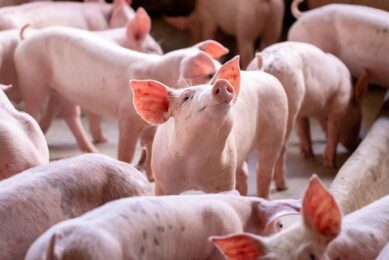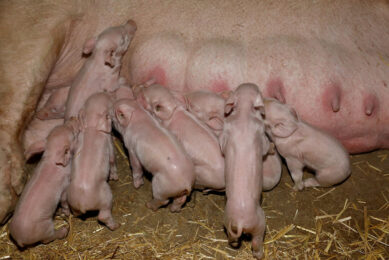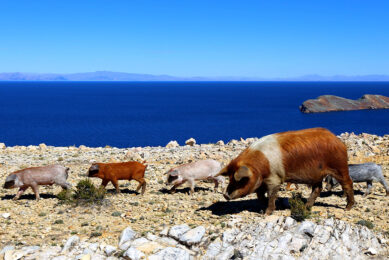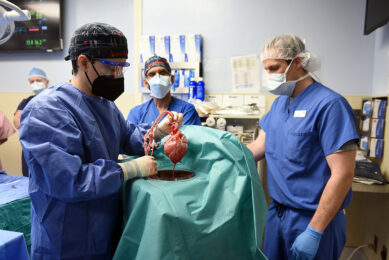What the textbooks don’t tell you about…Backtracking by rats and flies
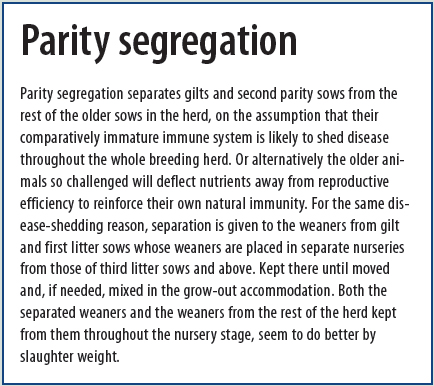
Backtracking is the colloquial term for the transmission of disease from older pigs to younger ones. The older pigs usually have had time to build a satisfactory immune shield, while the younger animals have yet to do so, and can succumb to disease, carried in clinical or subclinical form by their older companions in the unit.
In order to reduce this risk it is good that segregation by age is becoming more common on pig units and the textbooks encourage this development.
However in my opinion not enough of them place sufficient emphasis on backtracking. And they seldom mention the danger that diligent segregation as far as possible (it is not cheap) by age or weight can be completely negated by rats in particular and very probably by flies.
Disappointing
Over the years I have studied this quite closely on clients’ farms. Some pioneering farmers reported to me that they were a bit disappointed with the result of the concepts of segregated rearing of growing pigs and also the newer idea of parity segregation (see box ‘Parity segregation’). This was especially as they had allocated much thought, time and money into making the changes.
Even the protagonists of parity segregation seem – if you read their initial published papers carefully – a little disappointed that their beneficial results seemed to be less than expected. Once this disparity of reports on what should seem – and certainly is – a promising concept began to accumulate, I looked into it as far as I was able, visiting some of the farms concerned across two winters and three summers and telephoning the rest. Despite the segregation – could rats and flies be affecting the results?
Rats and backtracking
Circumstantial evidence perhaps, but there could be something in it. On three farms last year during that very hard winter we had in the Northern hemisphere I noticed far too many rats indoors for comfort – especially on a farm with a ‘rumbling’ disease problem. It could be that the rats were ‘backtracking’ infection on their feet and faeces despite the segregation practised. Rats don’t travel all that far when they find a good source of food (hoppers and spillage) and they are even less likely to do so unless the segregation concept is applied to separate farms, rather than farm buildings on the same unit; rarely possible of course.
Flies and backtracking
So much for winter. The summer before was a hot one and flies loved it. I was on a farm where the flies were so bad it was difficult to breathe without waving an arm like a windmill – difficult when you are trying to take notes! By coincidence the next farm visited on the following day and about 10 km away had little or no fly problem. This breeder was segregating the growing pigs by age and was surprised by my hesitant question on whether he was pleased with it or not. “Of course,” he replied, “You suggested it to me last year!”
Flattered, I thought I had better flatter him back. “How do you get so few flies?” I asked. He told me what they did – a textbook exercise dictated by his fly-spray supplier.
1. One man was responsible for rats, mice and flies.
2. The areas outside buildings were kept free of puddles, wet areas and organic rubbish.
3. Dung heaps were kept to a minimum, tidy and a seepage channel cut round them to a small covered pit.
4. The one slurry tank was covered.
5. In order to reduce flies inside the buildings, a long wire was strung down over the pig pens, on which were folded 60 x 30 cm cloths every 10 metres or so soaked in an insecticide, and replenished every two days. This was very efficient to judge from all the flies on the floor.
Rat and fly kings
If parity segregation as discussed is going to be negated by vermin and flies backtracking pathogens across the intervening spaces, then the considerable investment in money and labour could be prejudiced.
The negative effect could be particularly vulnerable to in-contact diseases carried by the feet and faeces of rats and mice, and maybe less so where the respiratory infections are concerned – where fly-borne transmission is more likely? So an appointment of a rat and fly ‘king’ with special responsibilities for ensuring bait stations are monitored and maintained and fly control rigorously carried out, could be just as important as reducing backtracking by spatial means.
Textbooks don’t major on backtracking. They should!



